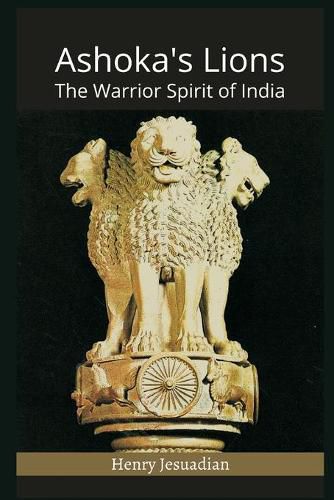Readings Newsletter
Become a Readings Member to make your shopping experience even easier.
Sign in or sign up for free!
You’re not far away from qualifying for FREE standard shipping within Australia
You’ve qualified for FREE standard shipping within Australia
The cart is loading…






This title is printed to order. This book may have been self-published. If so, we cannot guarantee the quality of the content. In the main most books will have gone through the editing process however some may not. We therefore suggest that you be aware of this before ordering this book. If in doubt check either the author or publisher’s details as we are unable to accept any returns unless they are faulty. Please contact us if you have any questions.
While researching for my book about the Indian Air Force Himalayan Eagle - The Story of the Indian Air Force, I came across some very interesting details about the military/warrior traditions of India that seemed at odds with the general image of a country thought to be spiritual and pacifist - the Buddha and Mahatma Gandhi immediately spring to mind in this context.
The details were intriguing enough for me to embark upon another ambitious project - to gather together and collate the data available on this Indian warrior tradition and its resurgence in modern-day India.
This work is the presentation of certain pertinent details that are available in the open sources but told in a comprehensive, objective and readable form so that an interested reader gains a better understanding of India’s little-known martial and warrior history!
It is a narrative of the warrior/military traditions of India going back to its pre-Vedic roots and covers the birth of the Indian warrior caste, the Kshatriyas. How these warriors dominated among the empire builders, and how their pre-eminence was superseded by civilian rule, a change in the political scene of India that was to have ramifications from the 10th to 20th century CE.
The title chosen for this work may confuse those readers who are aware that the emperor Ashoka eschewed violence for pacificism as a Buddhist. The lions in the title refer to the four represented on the Ashoka pillars at Sarnath, each facing to the points of the compass and which are symbolic of the present-day warriors of the country, the Indian armed forces, guarding against intrusions from any point.
$9.00 standard shipping within Australia
FREE standard shipping within Australia for orders over $100.00
Express & International shipping calculated at checkout
This title is printed to order. This book may have been self-published. If so, we cannot guarantee the quality of the content. In the main most books will have gone through the editing process however some may not. We therefore suggest that you be aware of this before ordering this book. If in doubt check either the author or publisher’s details as we are unable to accept any returns unless they are faulty. Please contact us if you have any questions.
While researching for my book about the Indian Air Force Himalayan Eagle - The Story of the Indian Air Force, I came across some very interesting details about the military/warrior traditions of India that seemed at odds with the general image of a country thought to be spiritual and pacifist - the Buddha and Mahatma Gandhi immediately spring to mind in this context.
The details were intriguing enough for me to embark upon another ambitious project - to gather together and collate the data available on this Indian warrior tradition and its resurgence in modern-day India.
This work is the presentation of certain pertinent details that are available in the open sources but told in a comprehensive, objective and readable form so that an interested reader gains a better understanding of India’s little-known martial and warrior history!
It is a narrative of the warrior/military traditions of India going back to its pre-Vedic roots and covers the birth of the Indian warrior caste, the Kshatriyas. How these warriors dominated among the empire builders, and how their pre-eminence was superseded by civilian rule, a change in the political scene of India that was to have ramifications from the 10th to 20th century CE.
The title chosen for this work may confuse those readers who are aware that the emperor Ashoka eschewed violence for pacificism as a Buddhist. The lions in the title refer to the four represented on the Ashoka pillars at Sarnath, each facing to the points of the compass and which are symbolic of the present-day warriors of the country, the Indian armed forces, guarding against intrusions from any point.